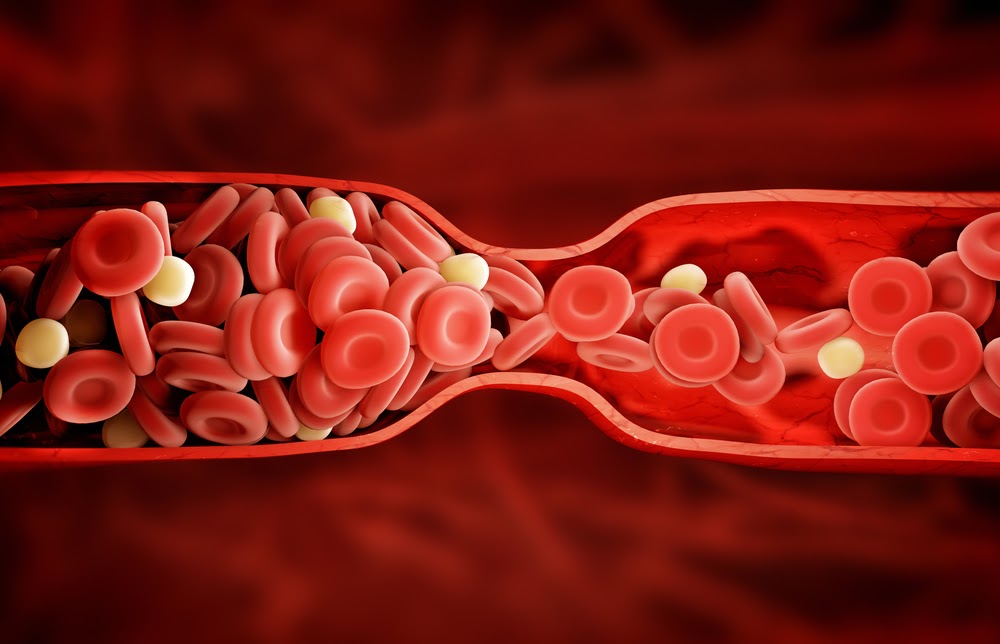What’s a blood clot?
A blood clot is when a clump of blood changes to a semisolid (gel-like) state from its liquid state. It’s a process that’s necessary to prevent the loss of too much blood from your body during an accident or injury. Blood clots, thus, are not always bad. In fact, without the coagulation process, damaged blood vessels in your body can’t fully recover.
However, blood clots aren’t always helpful and can be dangerous when they form in healthy blood vessels. Such clots can lead to life-threatening situations, which is why it’s important to identify the causes and symptoms of blood clots and learn about ways in which you can treat and prevent them.
Why does it happen?
Apart from repairing damaged blood vessels, clots can form due to several other reasons.
The blood clotting process may be triggered due to a wide range of causes. Injuries to your body can lead to blood clots. Besides, clotting can also take place due to smoking, obesity, cancer, pregnancy, and a few other reasons. Apart from all this, blood clots can also form due to genetic reasons. However, such inherited cases of clotting are rather uncommon.
Symptoms
Blood clots can take place in different parts of your body, including your arms and legs, brain, kidney, lungs, heart, and abdomen. While the overall process of clotting remains the same no matter where it’s taking place, the symptoms can vary.
Let’s take a look at some of the common symptoms of clotting in different parts of your body.
- Arms and legs: Your arms and legs might swell up, or you might feel pain, sudden warmth, and tenderness in them. The skin surrounding the clot will likely turn blue, sometimes even red.
- Abdomen: Abdominal pain is quite common if clots form over there. You’ll also feel like vomiting a lot. Sometimes, cases of diarrhea are also observed.
- Heart: Shortness of breath, sweating, and severe chest pain are common symptoms of clots in the heart.
- Brain: Loss of vision is a very common clotting symptom. You’ll feel dizzy while moving as if you were losing balance. Sometimes, your speech will also be a bit impaired if such clotting takes place inside the brain.
- Lungs: Acute chest pain and shortness of breath are common in such cases. The patient will also sweat a lot.
- Kidney: Urine output is decreased and blood may come out with it. You might feel nauseated and feverish from time to time. Sudden pain in the back and sides of your abdomen.
Treatment
Eliquis (Apixaban) is one of the most effective medications against blood clots. It’s known as a Direct Oral Anticoagulant (DOAC) which targets the respective proteins responsible for blood clots. When prescribed, you need to take them regularly, and not miss out on doses.
Warfarin is another drug used to combat blood clots. However, physicians prefer DOACs over warfarin, as taking Eliquis or other types of this medication can be less harmful in comparison to warfarin. Warfarin can lead to bleeding from the body during the treatment process, which is not the case for DOACs.
Preventive measures
Blood clots happen to be one of the most preventable types of blood condition. As deadly as they can be, blood clots can be prevented if you take the proper measures, and abide by a healthy lifestyle.
Blood clots take place when the regular flow of blood to a certain place is hindered. Hence, one of the ways you can prevent clotting is by wearing clothes that aren’t tight, such that they will squeeze down on your veins to stop the blood from flowing.
Apart from this, you should also consider giving up smoking. Smoking is one of the most dangerous addictions known to mankind. It’s one of the leading causes of cancer, as well as blood clots. By giving up smoking, you can immediately reduce the chances of clots or strokes by a great deal.
Consuming a healthy diet is one of the easiest ways to prevent blood clots. To do so, you have to maintain a healthy weight, intake proper amounts of fluids, and consume less salt. Besides, you should also exercise regularly. Don’t overdo it though. Make sure you’re not injuring yourself while committing to your exercise routine.
Blood clots are dangerous, but they can be cured. More importantly, they can be prevented as well. By being cautious, you can save yourself from a trip to the doctor. However, if things go out of hand, you must immediately consult with a professional.

